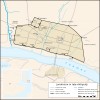Fine Coins Showcase
Antiquities Showcase
Show Empty Categories
Shop Search
Shopping Cart
My FORVM
Contact Us
About Forum
Shopping at Forum
Our Guarantee
Payment Options
Shipping Options & Fees
Privacy & Security
Forum Staff
Selling Your Coins
Identifying Your Coin
FAQs
zoom.asp
Home ▸ Catalog ▸ |Roman Coins| ▸ |Constantinian Era| ▸ |Constantine II||View Options:   | | | | | | Constantine II was the son of Constantine I, the eldest with his second wife, Fausta. He was born in Arles (which was renamed Constantia in his honor in 328, explaining the CON mintmarks for Arles) and was made Caesar before he was a year old in 316 A.D. Upon his father's death, Constantine II inherited the Western part of the empire. After quarreling with his brother Constans, he invaded his territory, only to be killed in an ambush near Aquileia. His coins often include "IVN" in the legend, an abbreviation for junior. |


SH28377. Billon reduced follis, RIC VII London 283 (R4) var. (draped), Hunter V 5 var. (described as cuir. but wearing trabea), SRCV V 17149 var. (bust), Cohen VII 8 ff. var. (same), Choice aEF, weight 3.005 g, maximum diameter 19.3 mm, die axis 135o, 1st officina, Londinium (London, England) mint, as caesar, 323 - 324 A.D.; obverse CONSTANTINVS IVN N C, laureate and cuirassed bust, Victory on globe offering wreath in right hand, mappa in left hand; reverse BEAT TRA-NQLITAS, globe on altar inscribed VOT/IS / XX, three stars above, PLON in exergue; extremely rare; SOLD


This type is apparently unpublished and this is the only example of the type known to Forum. This reverse was used for very rare (both R5) issues of Licinius I and Licinius II Caesar. CNG e-auction 368, lot 496, is Constantine II with this same reverse, also 5th officina, but with Constantine II on the obverse left holding a Victory on globe and mappa.RL76392. Billon centenionalis, apparently unpublished, cf. RIC VII Siscia 116 - 117 (for obv. type) and 138 - 139 (for rev. type, issues of the Licinii), EF, excellent portrait, both sides slightly off-center, left side of reverse legend weak, some porosity, a few light marks, weight 2.773 g, maximum diameter 19.0 mm, die axis 180o, 5th officina, Siscia (Sisak, Croatia) mint, as caesar, 320 A.D.; obverse CONSTANTINVS IVN NOB C, laureate and cuirassed bust left; reverse VIRTVS EXERCIT (courage of the army), vexillum inscribed VOT / XX in two lines, two seated barbarian captives back-to-back flanking base, Christogram (Chi-Rho monogram) left, ESIS star in exergue; ex Scott Collection; extremely rare; SOLD


Constantine II was the son of Constantine I, the eldest with his second wife, Fausta. He was made Caesar before he was a year old. Constantine II inherited the Western empire. After quarreling with his brother Constans, he invaded his territory, only to be killed in an ambush near Aquileia.RL57024. Billon centenionalis, RIC VII Arles p. 268, 315; LRBC I 324; SRCV V 17281; Cohen VII 239; Hunter V -, EF, desert patina, attractive!, weight 3.080 g, maximum diameter 20.3 mm, die axis 180o, 3rd officina, Constantina-Arelatum (Arles, France) mint, as caesar, 327 A.D.; obverse CONSTANTINVS IVN NOB C, laureate, draped, and cuirassed bust left; reverse VIRTVS CAESS (the valor of the two princes), campgate with four turrets and open gates, S - F at sides, ARLT in exergue; SOLD
CLICK HERE TO SEE MORE FROM THIS CATEGORY - FORVM's PRIOR SALES



OBVERSE| LEGENDS|
REFERENCES|
Page created in 1.064 seconds.







